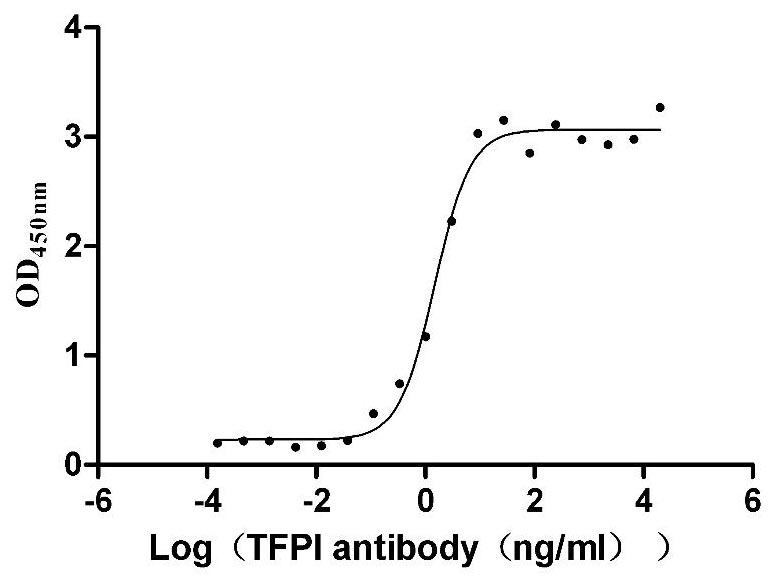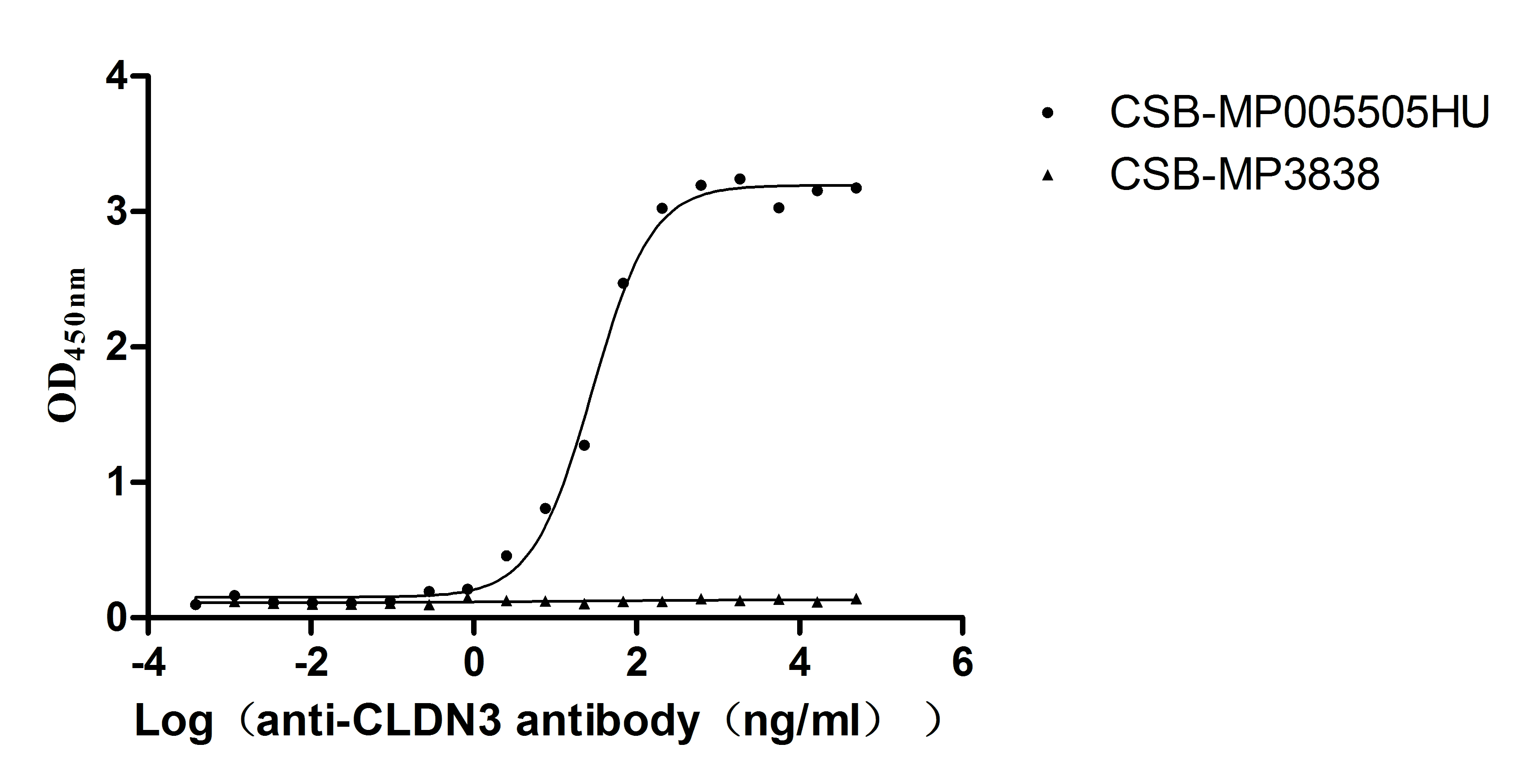Recombinant Mouse Scavenger receptor cysteine-rich type 1 protein M130 (Cd163), partial
In Stock-
中文名称:Recombinant Mouse Scavenger receptor cysteine-rich type 1 protein M130(Cd163) ,partial
-
货号:CSB-EP650452MO
-
规格:¥1836
-
图片:
-
其他:
产品详情
-
纯度:Greater than 90% as determined by SDS-PAGE.
-
基因名:
-
Uniprot No.:
-
别名:Cd163; M130Scavenger receptor cysteine-rich type 1 protein M130; CD antigen CD163) [Cleaved into: Soluble CD163; sCD163)]
-
种属:Mus musculus (Mouse)
-
蛋白长度:Partial
-
来源:E.coli
-
分子量:34.2kDa
-
表达区域:86-365aa
-
氨基酸序列VVCQQLGCPTSIKALGWANSSAGSGYIWMDKVSCTGNESALWDCKHDGWGKHNCTHEKDAGVTCSDGSNLEMRLVNSAGHRCLGRVEIKFQGKWGTVCDDNFSKDHASVICKQLGCGSAISFSGSAKLGAGSGPIWLDDLACNGNESALWDCKHRGWGKHNCDHAEDVGVICLEGADLSLRLVDGVSRCSGRLEVRFQGEWGTVCDDNWDLRDASVVCKQLGCPTAISAIGRVNASEGSGQIWLDNISCEGHEATLWECKHQEWGKHYCHHREDAGVTCS
Note: The complete sequence including tag sequence, target protein sequence and linker sequence could be provided upon request. -
蛋白标签:N-terminal 6xHis-tagged
-
产品提供形式:Liquid or Lyophilized powder
Note: We will preferentially ship the format that we have in stock, however, if you have any special requirement for the format, please remark your requirement when placing the order, we will prepare according to your demand. -
缓冲液:If the delivery form is liquid, the default storage buffer is Tris/PBS-based buffer, 5%-50% glycerol.
Note: If you have any special requirement for the glycerol content, please remark when you place the order.
If the delivery form is lyophilized powder, the buffer before lyophilization is Tris/PBS-based buffer, 6% Trehalose. -
储存条件:Store at -20°C/-80°C upon receipt, aliquoting is necessary for mutiple use. Avoid repeated freeze-thaw cycles.
-
保质期:The shelf life is related to many factors, storage state, buffer ingredients, storage temperature and the stability of the protein itself.
Generally, the shelf life of liquid form is 6 months at -20°C/-80°C. The shelf life of lyophilized form is 12 months at -20°C/-80°C. -
货期:3-7 business days
-
注意事项:Repeated freezing and thawing is not recommended. Store working aliquots at 4°C for up to one week.
-
Datasheet & COA:Please contact us to get it.
相关产品
靶点详情
-
功能:Involved in clearance and endocytosis of hemoglobin/haptoglobin complexes by macrophages and may thereby protect tissues from free hemoglobin-mediated oxidative damage. May play a role in the uptake and recycling of iron, via endocytosis of hemoglobin/haptoglobin and subsequent breakdown of heme. Binds hemoglobin/haptoglobin complexes in a calcium-dependent and pH-dependent manner. Induces a cascade of intracellular signals that involves tyrosine kinase-dependent calcium mobilization, inositol triphosphate production and secretion of IL6 and CSF...显示更多
-
基因功能参考文献:
- house dust mite -challenged Cd163-/- mice displayed increases in airway eosinophils and mucous cell metaplasia PMID: 26376364
- In diabetic mice, increased sCD163 at wk 5 and decreased percentage of CD163(+) monocytes at wk 10 preceded alteration in kidney collagen IV mRNA at wk 20. In vitro incubation of monocytes in anti-inflammatory glucocorticoid increased the percentage of CD163(+) monocytes. PMID: 27354410
- During ischaemia, soluble CD163 functions as a decoy receptor for TWEAK, to regulate TWEAK-induced activation of canonical nuclear factor-kappaB and Notch signalling necessary for myogenic progenitor cell proliferation. PMID: 26242746
- Data indicate an essential substrate motif for ADAM17-mediated CD163 and proTNF-alpha cleavage in macrophages. PMID: 24275664
- alpha(1)-Acid glycoprotein up-regulates CD163 via TLR4/CD14 protein pathway: possible protection against hemolysis-induced oxidative stress. PMID: 22807450
- Data show that telmisartan reduced the mRNA expression of CD11c and TNF-alpha, M1 macrophage markers, and significantly increased the expressions of M2 markers, such as CD163, CD209. PMID: 21427223
- Assignment of the CD163 antigen to mouse chromosome 6 band F2. PMID: 12698011
收起更多
-
亚细胞定位:[Soluble CD163]: Secreted.; Cell membrane; Single-pass type I membrane protein.
-
组织特异性:Expressed in monocytes and mature macrophages such as Kupffer cells in the liver, red pulp macrophages in the spleen and mesenteric lymph nodes.
-
数据库链接:






















